This article was medically reviewed by Mark Ziats, MD, PhD. Dr. Mark Ziats is an Internal Medicine Physician, Scientist, Entrepreneur, and the Medical Director of xBiotech. With over five years of experience, he specializes in biotechnology, genomics, and medical devices. He earned a Doctor of Medicine degree from Baylor College of Medicine, a Ph.D. in Genetics from the University of Cambridge, and a BS in Biochemistry and Chemistry from Clemson University. He also completed the INNoVATE Program in Biotechnology Entrepreneurship at The Johns Hopkins University - Carey Business School. Dr. Ziats is board certified by the American Board of Internal Medicine.
There are 36 references cited in this article, which can be found at the bottom of the page.
wikiHow marks an article as reader-approved once it receives enough positive feedback. This article has 15 testimonials from our readers, earning it our reader-approved status.
This article has been viewed 589,369 times.
Adequate water is essential for health and vitality. Dehydration happens when you do not replace the water in your body that is lost throughout the day. Dehydration can be caused by exercise, illness, or simply not drinking enough water. Understanding the signs and knowing how to react are essential for good health and recovery. You can usually treat mild to moderate dehydration on your own; however, if you have severe dehydration you should seek immediate medical attention.[1]
Steps
Assessing the Situation
-
1Know who is most at risk for dehydration. Very young children, the elderly, and people who suffer from chronic illness are at the highest risk of dehydration; however, other groups are also at higher risk.[2]
- Children’s bodies are made up of more water than adults, and children’s metabolisms are higher than adults’ metabolisms. Children often experience vomiting and diarrhea as part of childhood illnesses. They may also not be able to understand or communicate when they need fluids.
- Older people may not experience thirst sensations as regularly, and their bodies do not conserve water as well. Some older people may also have conditions, such as Alzheimer’s disease, that make it difficult to communicate their needs to caregivers.
- People with chronic illnesses, such as diabetes, heart failure, or kidney disease, are more likely to become dehydrated. People may also take medications that contribute to dehydration (diuretic drugs).
- Acute illnesses such as influenza can also increase your risk of dehydration. Fever and sore throat make you less likely to want to drink.
- Heavy exercisers, especially endurance athletes, are at a higher risk of dehydration because their bodies may lose more water than they are able to consume; however, dehydration is also cumulative, so you can become dehydrated over the course of a few days even with light exercise if you don’t consume enough water.
- People in very hot climates or who are frequently exposed to prolonged heat are at higher risk. For example, construction workers and other people who work outside all day are at an elevated risk for dehydration. This is especially true if it is also humid in that climate. Sweat does not evaporate well in humid, hot environments, so your body has more trouble cooling itself.
- People who live at high altitudes (above 8,200 ft/2,500 m) are at an increased risk for dehydration. Your body may resort to increased urination and rapid breathing to keep your body oxygenated, both of which contribute to dehydration.[3]
-
2Recognize mild or moderate dehydration. You can usually treat mild to moderate dehydration at home, with the remedies suggested in this article. Common signs of mild to moderate dehydration include:[4]
- Dark yellow or amber urine
- Infrequent urination
- Increased thirst
- Dry mouth, nose, and eyes
- Overheating
- Headache
- Fatigue
Advertisement -
3Recognize severe dehydration. You should not treat severe dehydration at home with remedies. You will probably need IV hydration to recover from severe dehydration without quick and appropriate rehydration severe damage can be done to organs such as kidney and brain. Seek immediate medical attention if your symptoms include any of the following:[5]
- Little or no urination
- Reduced sweat
- Very dark urine
- Dizziness or light-headedness that significantly impairs your ability to stand or move
- Weakness or shakiness
- Low blood pressure
- Fast heart rate
- Fever
- Lethargy or confusion
- Seizure
- Shock (e.g., pale/clammy skin, chest pain)
-
4Look for symptoms of mild to moderate dehydration in children. Children may not be able to communicate all of their symptoms to you. There are several things you can look for to help determine whether your child is dehydrated.[6]
- Reduced tears. If your child is crying but not producing tears (or not as many as usual), she is dehydrated.
- Capillary refill time. This is a simple test often used by pediatricians to test for dehydration. Press on the child’s fingernail until the nail bed turns white. Have your child hold her hand above the heart. Watch how quickly the nail bed turns pink. If takes more than two seconds, your child may be dehydrated.[7]
- Rapid, shallow, or disturbed breathing. If your child is not breathing normally, it could be a sign that she is dehydrated.
-
5Recognize severe dehydration in infants and children. Severe dehydration in children should be treated immediately by a medical professional. Call your pediatrician or emergency medical services if your child has any of the following symptoms:[8]
- Sunken eyes or fontanelle. The fontanelle is the “soft spot” on very young infants’ heads. If it looks sunken, the baby is likely dehydrated.
- Skin turgor. Skin turgor is essentially how your skin “snaps back” after being moved. For example, children who are dehydrated will have reduced skin turgor. If you pull up a small fold of skin on the back of your child's hand or on his stomach and it doesn’t return to its original state, the child is dehydrated.[9]
- No urine output in eight hours or more
- Extreme lethargy or loss of consciousness
-
6Check your urine. When you are adequately hydrated, your urine should be a pale, transparent yellow. Having too much or too little water in your system will change the color of your urine.[10]
- If your urine is very clear or has almost no color, you may be over-hydrated. Overhydration can cause dangerously low levels of sodium, a natural electrolyte your body needs to function.[11]
- If your urine is dark yellow or amber, you are probably a little dehydrated and should drink water.
- If your urine is orange or brown, you are severely dehydrated and need medical attention immediately.
Treating Infants and Children
-
1Use an oral rehydration solution. This is the preferred treatment recommended by the American Academy of Pediatrics for mild to moderate dehydration. Plan to restore your child’s fluid levels over the course of three to four hours.[12] [13]
- Use a commercial electrolyte solution such as Pedialyte. These solutions have sugar and salt electrolytes to help prevent low blood sugar. It is possible to make your own rehydration solutions, but due to the possibility of error, it is generally safer to use commercial solutions.
- Give your child 1–2 teaspoons (5–10 ml) of the solution every few minutes. You can use a spoon or an oral syringe (does not contain a needle). Start off slow; too much fluid at once can cause nausea or vomiting. If your child vomits, wait 30 minutes before starting again.[14]
-
2Avoid other fluids. If your child is dehydrated, he will probably need to have the electrolyte balance in the bloodstream restored. Sodas and juices may cause hyponatremia, or low blood sodium, in children. Plain water also does not contain enough electrolytes to replenish your child’s body because children have a much faster electrolyte turnover than adults.[15]
- Sodas may also contain caffeine, which is a diuretic and can further dehydrate the child.
- Juices may have too much sugar and can make dehydration worse in young children. This is also true for sports drinks such as Gatorade. Fruit juices can be diluted with water or flat soda.[16]
- Other fluids to avoid include milk, clear broths, tea, ginger ale, and Jell-O.[17]
-
3Breastfeed an infant. If your baby is still breastfeeding, try to persuade the infant to breastfeed. This will help restore the baby’s electrolyte and fluid levels and will also help further fluid loss through diarrhea.[18]
- You can use oral rehydration solution in between breast feeding if your infant is very dehydrated; however, you should be taking your infant to the emergency room if she's severely dehydrated.
- Do not use formula during the rehydration period.[19]
-
4Maintain hydration. Once your child has had the initial fluids restored, you need to make sure that the child continues to get enough fluid for the next 24 hours. The American Association of Family Physicians recommends the following formula:[20]
- Infants should receive 1 ounce of oral rehydration solution per hour.
- Toddlers (ages 1–3) should receive 2 ounces of oral rehydration solution per hour.
- Older children (over 3) should receive 3 ounces of oral rehydration solution per hour.
-
5Check the child’s urine. To make sure that rehydration is working, check the color of your child’s urine. As with adults’ urine, healthy children should have pale, clear yellow urine.[21]
- Very clear or colorless urine could be a sign of overhydration. Ease up on the fluids for a bit to make sure that you don’t throw off your child’s sodium balance.
- If the urine is amber or darker, continue with the rehydration treatment.
Treating Adults
-
1
-
2Avoid some fluids. When you’re dehydrated, avoid caffeine and alcohol. These have dehydrating effects on the body. Beverages such as coffee, caffeinated tea, and soda should not be taken while dehydrated. You should also avoid fruit juices, as the sugar can have a dehydrating effect by increasing urination.[25]
-
3Eat foods with a high water content. If you are not nauseated, try eating some fruits and vegetables with a high water content.
- Watermelon, cantaloupe, grapefruit, oranges, and strawberries are very high in water content.
- Broccoli, cauliflower, cabbage, celery, cucumbers, eggplant, lettuce, sweet peppers, radishes, spinach, zucchini, and tomatoes have very high water content.
- Avoid dairy if you have diarrhea or nausea along with dehydration. It can make these symptoms worse.[26]
-
4Continue hydrating. Continue to rehydrate and rest over the next 24 hours. Drink plenty of fluids. Do not stop drinking simply because you don’t feel thirsty anymore. It can take several days to completely replace lost fluids.[27]
-
5Seek medical assistance if you do not improve. If you don’t feel better after rehydrating, or if you have a fever over 104°F (40°C), seek immediate medical help.[28]
Treating Heat-Related Dehydration
-
1Stop activities. If you are dehydrated, further exertion will only make your body weaker. Stop your activities.[29]
-
2Move to a cool area. This will help promote heat loss from sweat and prevent heat exhaustion or heat stroke.[30]
-
3Lie down. This will prevent any more exertion and help prevent fainting.[31]
- If you can, prop your feet up. This may help keep you from fainting.
-
4Cool your body. If dehydration is a side effect of heat exposure, remove excess clothing to cool off. You can also use damp towels and spray misters to help cool your body.[32]
- Do not use ice water or ice packs. These can cause the blood vessels to constrict and can actually increase heat retention.
- Use a spray bottle to mist lukewarm water onto the skin. The evaporation will help cool your body.[33]
- Place damp cloths on areas of your body with thinner skin, such as the neck and face wrists, collarbone, upper arms and armpits, and inner thighs.[34]
-
5Encourage your child to rest. If your child is mildly dehydrated due to overexertion, for example from playing vigorous sports, encourage the child to rest in a cool place out of the sun until she has replaced the lost fluids.[35]
- Allow your child to drink as much water as she wants to during this period.
- For older children, sports drinks containing sugar and salts (electrolytes) can be a good rehydration option.
-
6Rehydrate. Use the steps in Method 3 to rehydrate your body. Drink at least 2 quarts (2 liters) of fluids over two to four hours.
- You should try to consume sports drinks that contain electrolytes or rehydration solutions to help restore your electrolyte balance. Mix 1 quart water with ½ teaspoon table salt and 6 teaspoons sugar for an inexpensive at-home rehydration solution.
- Avoid salt tablets. They can cause excess salt in the body and can cause severe complications.[36]
Preventing Dehydration
-
1Prevent dehydration by drinking fluids frequently. You should drink enough fluids even if you don't feel particularly thirsty. You may be dehydrated before you feel thirsty.
- The amount of water that adults need varies, but in general, men should drink at least 13 cups (3 liters) of fluids per day. Women should drink at least nine cups (2.2 liters) of fluids per day.[37]
- A good rule of thumb is to drink between .5–1 ounce of water for each pound you weigh. Thus, a 200-pound person should drink between 100–200 ounces of fluids per day, depending on exercise and activity level.[38]
- If you exercise, drink an extra 1.5–2.5 cups of water for moderate exercise. If you will be exercising more than an hour, get additional rehydration using a sports drink containing electrolytes. Aim for .5–1 cup of fluid every 15–20 minutes during exercise.[39]
- Avoid too much fruit juice. The sugar can cause trouble with your blood sugar levels and can increase urination, which can contribute to dehydration.[40]
-
2Assess your salt levels. Heavy exercise, such as that done by athletes, can cause salt loss. The average person can lose 500 mg of sodium through sweat over an hour-long workout; for athletes, that can be as much as 3000 mg.[41]
- Try weighing yourself before and after a workout. Include the amount of water you drank during your workout. For example, if the scale shows you as one pound lighter but you also drank 16 ounces of water, you’re actually down two pounds. If you have lost more than 2 pounds, eat a handful of salty snacks such as pretzels or salted nuts to replace the lost sodium.
-
3Bring water with you. If you will be outside, such as at a sporting event or activity, bring extra water with you. If you will be doing vigorous exercise, consider bringing sports drinks that contain electrolytes as well as a refillable water bottler.[42]
-
4Wear breathable clothing. If you are regularly out in the heat or do vigorous exercise, wear breathable clothing. This can help your body regulate its heat. Bring along a personal mister or fan to help you keep cool. This will keep your body from losing fluid through perspiration.[43]
- Don’t exercise during the hottest part of the day, if you can avoid it. High heat index, where the air temperature is hot with high humidity, can be particularly bad for your body.[44]
-
5Eat hydrating foods. Fresh fruits and vegetables are often good sources of fluids. The average person gets about 19% of their daily water intake from food.[45]
- Remember to drink extra water if you are eating dry or salty foods, as these can cause moisture loss.
Warnings
- Know that infants and small children are more prone to dehydration than adults. Never withhold water from a child as punishment. The child could become ill or die.⧼thumbs_response⧽
- Don't drink unfiltered/untreated river, lake, ditch, pond, stream, creek, mountain or ocean water. You may develop infections or parasites.⧼thumbs_response⧽
- If you do not feel better after rehydrating, or if you have symptoms of severe dehydration, seek emergency medical attention immediately.⧼thumbs_response⧽
- Very young infants should never be given pure water as their kidneys are immature still and they cannot concentrate their urine appropriately. Drinking pure water can really throw off their bodies electrolyte concentration potentially causing serious problems. General recommendation is no free water until an infant is at least six months old.⧼thumbs_response⧽
References
- ↑ https://medlineplus.gov/ency/article/000982.htm
- ↑ https://www.nhsinform.scot/illnesses-and-conditions/nutritional/dehydration
- ↑ https://familydoctor.org/condition/high-altitude-illness/
- ↑ https://www.nhsinform.scot/illnesses-and-conditions/nutritional/dehydration#symptoms-of-dehydration
- ↑ https://my.clevelandclinic.org/health/treatments/9013-dehydration
- ↑ https://my.clevelandclinic.org/health/articles/8276-dehydration-and-your-child
- ↑ http://www.nlm.nih.gov/medlineplus/ency/article/003394.htm
- ↑ https://my.clevelandclinic.org/health/articles/8276-dehydration-and-your-child
- ↑ http://www.nlm.nih.gov/medlineplus/ency/imagepages/17223.htm
- ↑ https://health.clevelandclinic.org/what-urine-color-means/
- ↑ https://www.merckmanuals.com/home/hormonal-and-metabolic-disorders/water-balance/overhydration
- ↑ http://www.aafp.org/afp/2009/1001/p692.html
- ↑ http://kidshealth.org/parent/firstaid_safe/emergencies/dehydration.html#
- ↑ http://www.aafp.org/afp/2009/1001/p692.html
- ↑ http://www.aafp.org/afp/2009/1001/p692.html
- ↑ https://www.healthychildren.org/English/health-issues/conditions/abdominal/Pages/Drinks-to-Prevent-Dehydration-in-a-Vomiting-Child.aspx
- ↑ http://kidshealth.org/parent/firstaid_safe/emergencies/dehydration.html#
- ↑ https://my.clevelandclinic.org/health/articles/8276-dehydration-and-your-child
- ↑ http://kidshealth.org/parent/firstaid_safe/emergencies/dehydration.html#
- ↑ http://www.aafp.org/afp/2009/1001/p692.html
- ↑ http://health.clevelandclinic.org/2013/10/what-the-color-of-your-urine-says-about-you-infographic/
- ↑ https://my.clevelandclinic.org/health/symptoms/8106-nausea--vomiting
- ↑ http://www.nlm.nih.gov/medlineplus/ency/article/000982.htm
- ↑ http://my.clevelandclinic.org/health/diseases_conditions/hic_avoiding_dehydration
- ↑ https://my.clevelandclinic.org/health/treatments/9013-dehydration
- ↑ https://health.clevelandclinic.org/moms-advice-is-still-the-best-for-treating-diarrhea/
- ↑ https://medlineplus.gov/dehydration.html
- ↑ https://www.urmc.rochester.edu/encyclopedia/content.aspx?contenttypeid=85&contentid=P00828
- ↑ https://www.hopkinsmedicine.org/health/conditions-and-diseases/dehydration-and-heat-stroke
- ↑ https://orthoinfo.aaos.org/en/diseases--conditions/heat-injury-and-heat-exhaustion
- ↑ https://www.hopkinsmedicine.org/health/conditions-and-diseases/dehydration-and-heat-stroke
- ↑ https://my.clevelandclinic.org/health/diseases/16425-heat-illness
- ↑ http://www.aafp.org/afp/2005/0601/p2141.html
- ↑ https://my.clevelandclinic.org/health/diseases/16425-heat-illness
- ↑ https://kidshealth.org/en/parents/heat.html
- ↑ http://www.nlm.nih.gov/medlineplus/ency/article/000982.htm
- ↑ https://www.eatright.org/food/nutrition/healthy-eating/how-much-water-do-you-need
- ↑ http://www.nhs.uk/livewell/goodfood/pages/water-drinks.aspx
- ↑ https://familydoctor.org/athletes-the-importance-of-good-hydration/
- ↑ https://my.clevelandclinic.org/health/treatments/9013-dehydration
- ↑ https://www.health.harvard.edu/staying-healthy/exercise-and-sodium
- ↑ https://familydoctor.org/hydration-why-its-so-important/
- ↑ https://my.clevelandclinic.org/health/diseases/21480-heat-exhaustion
- ↑ https://www.pennmedicine.org/updates/blogs/musculoskeletal-and-rheumatology/2017/july/tips-for-working-out-in-heat
- ↑ https://health.clevelandclinic.org/dehydrated-these-7-foods-will-satisfy-your-thirst-and-hunger/
- ↑ https://www.cdc.gov/disasters/extremeheat/heattips.html
About This Article
To treat dehydration in children, give them small amounts of oral rehydration solution for the next 24 hours and don't allow them to drink other types of fluids until the situation is resolved. For dehydrated adults, drink water and other clear fluids frequently but in small amounts to prevent vomiting. Continue hydrating with water for the next 24 hours and avoid beverages like alcohol, coffee, caffeinated tea, and soda for several days so your body can return to normal. If you don’t feel better or develop a fever after rehydrating, seek immediate medical help. For tips on preventing dehydration, read on!
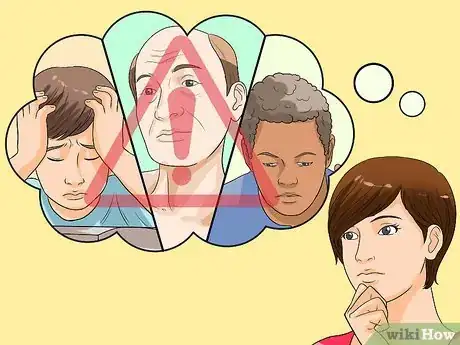
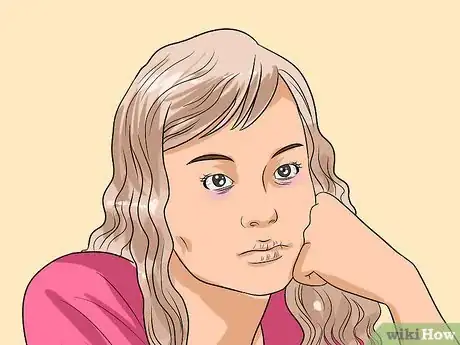
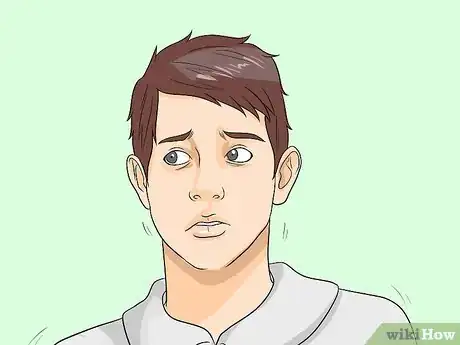
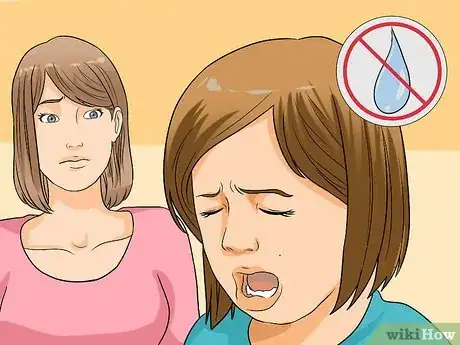

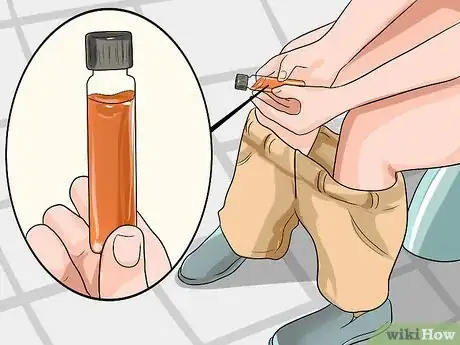
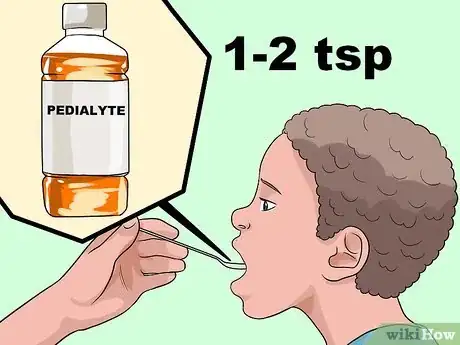



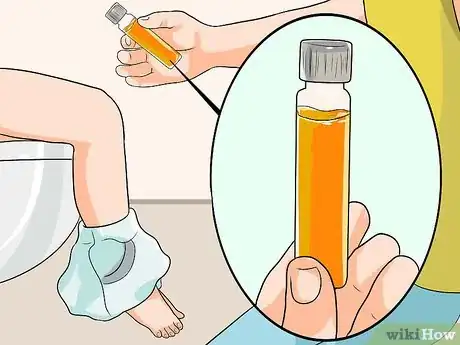
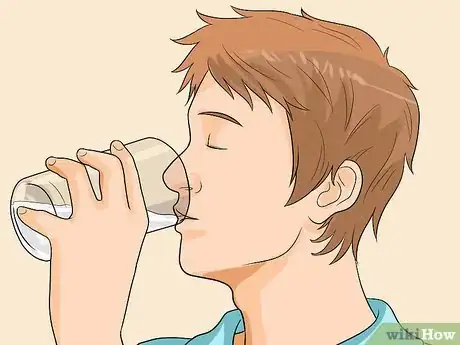



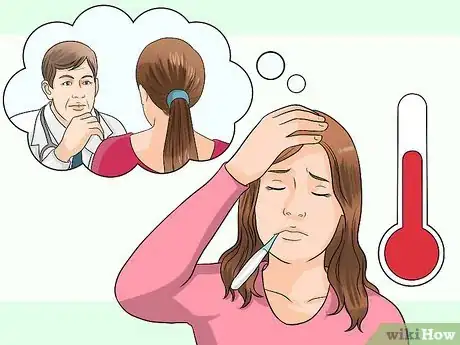



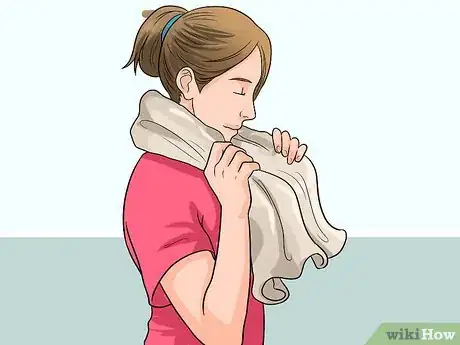
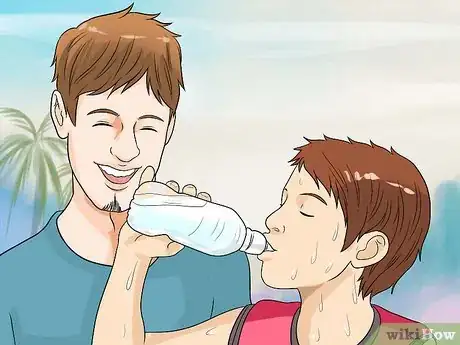
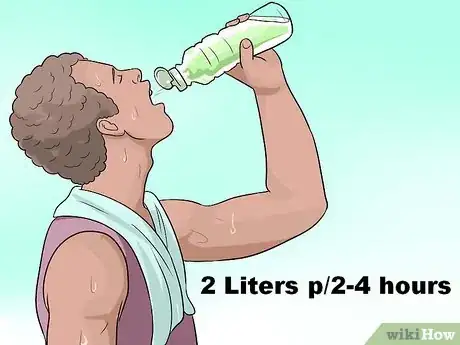





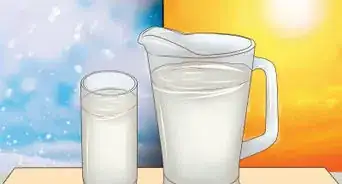
-Step-9-Version-5.webp)
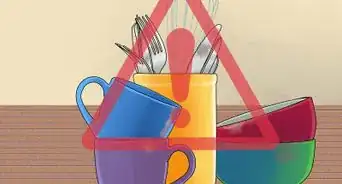
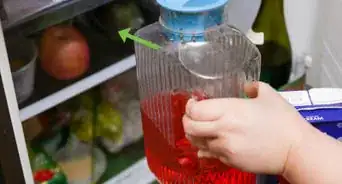

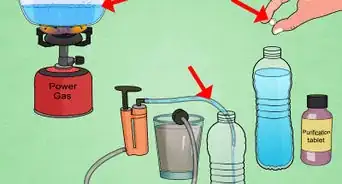










-Step-9-Version-5.webp)
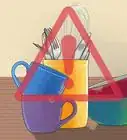




































Medical Disclaimer
The content of this article is not intended to be a substitute for professional medical advice, examination, diagnosis, or treatment. You should always contact your doctor or other qualified healthcare professional before starting, changing, or stopping any kind of health treatment.
Read More...